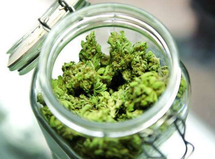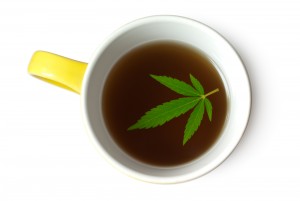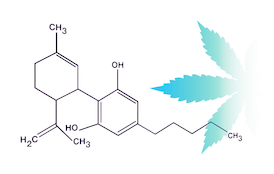|
Some patients tell me that Cannabis doesn’t improve pain, it just relaxes them or helps sleep. My first Cannabis patient handed me his remaining opiate prescription saying, “I don’t need these anymore.” From my perspective, that was all the proof I needed. Whether it alleviated his pain, improved his sleep, or reduced his stress, Cannabis improved his life because it was far less risky than opiates.
One in five people live with chronic pain. In some countries, chronic pain is estimated at 25% of the population. Two out of three people report that their chronic pain is moderate to severe and half of them have experienced chronic pain for more than ten years. Chronic pain often occurs with other problems, including insomnia, anxiety, depression, post-traumatic stress, and substance use disorders. A recent study by physicians in British Columbia, Canada reviewed evidence on the use of Cannabis Based Medicine on Chronic Pain. The authors specifically avoided reviewing studies on synthetic cannabinoids. They only evaluated products derived from the plant. Why? Because that’s what the community uses. Synthetic THC has been available as prescription medicine for over four decades. It’s been approved for nausea from chemotherapy. A recent study surveyed cancer patients and survivors on the Cannabis products they were using. Most respondents (60%) reported using products mostly containing THC instead of products containing CBD or both. The finding conflicts with certain regions that permit only low THC products for medical purposes. “Cannabis use is becoming more common among cancer patients and survivors, who often consume products to alleviate cancer symptoms and treatment side effects,” says the study’s senior author, Danielle Smith, PhD, MPH, Cannabis doesn’t fit the medical paradigm, yet it treats, cures, or simply reduces harm. The medical and pharmaceutical industries struggle with the variable, multi-agent botanical like trying to fit a square peg into a round hole. To me, that’s a sign that calls for innovation. Rather than reduce the plant to single agent products, let’s accept what it is and learn to work with it. That approach might work for many things in life. Let’s get to it. The Old Toker, recently sent me a MedPage Today article on the age-old argument of Cannabis vs Tobacco. Scanning the article, I learned that MedPage Today was presenting age-old information. The article quotes a 2007 study out of Ottawa that has long been refuted. Is Cannabis smoking less or more harmful than Tobacco smoking? Once again, let’s look at the evidence. MedPage Today, you owe me. Despite a lack of updated information, Dr. Donald Tashkin, M.D., after a 30-year career as a UCLA Pulmonologist, has the definitive answer for the Tobacco vs. Cannabis question. He is well known for his studies on Cannabis smoking, emphysema, and lung cancers. In his long career, Dr. Tashkin received several grants from the NIH, specifically from NIDA, to study the effects of smoking Cannabis on lungs. In his 2013 publication titled, Effects of Marijuana Smoking on the Lungs, he concludes "...the accumulated weight of evidence implies far lower risks for pulmonary complications of even regular heavy use of marijuana compared with the grave pulmonary consequences of tobacco.” One Tashkin study even found a Cannabis using cohort had significantly less lung cancer than the Control cohort. His comment refutes the conclusion of earlier studies, including his own, and stands as the definitive response to the Cannabis vs Tobacco smoking question. That being said...Smoking anything is not a medically recommended habit. The ash debris from inhaled smoke is a lung irritant. The heat of the smoke contributes to lung tissue damage. If you can avoid the habit, I recommend it. A correlation with Cannabis smoke and chronic or recurrent bronchitis, notes Dr. Tashkin, is the only significant long-term effect to date. Many people smoke Cannabis for its acute effects. Physiologic muscle relaxation settles the body. In mere minutes cannabinoids pass through the lungs, enter the bloodstream, and rush to the brain. The immediate stress and anxiety relief after inhaling Cannabis is a welcome outcome. Molecular models explain how cannabinoids attach to receptors in the central nervous system and at the nerve-muscle junction causing these relaxing effects. Tobacco, paradoxically, produces similar results. The difference is that Tobacco works by activating the sympathetic “fight or flight” system whereas Cannabis affects the parasympathetic “rest and digest” system. The sympathetic nervous system acts in defense to danger whereas the parasympathetic nervous system repairs or heals. Is this is why Cannabis smoke is associated with a better outcome than Tobacco smoke? In regard to the dangers of smoking, the evidence continues to pile on. Results from a prospective longitudinal lung study were recently published in Respiratory Medicine, a peer reviewed science journal The study followed a group of people from birth, testing the lung function of Cannabis and Tobacco smokers at age 21 and 30. The results align with Dr. Tashkin’s conclusion. Tobacco smoking (with or without Cannabis) restricts lung function. However, Cannabis smoking alone does not consistently affect lung function.
Does this put the question to rest? Not really. In science, there is always the pursuit of more evidence. At least MedPage Today can now report evidence that is relevant. Smoking is the most popular method of Cannabis use. However, there are other means of inhaling. Vaporizing machines can be used to inhale Cannabis flower vapor produced at lower temperatures. Vape carts or vape pens do the same but use Cannabis oils with higher potencies. There isn’t much evidence on the long-term effect from inhaling oil vapors. Vape pen users beware. In 2019, some manufacturers of Vape Pens added Vitamin E oil in their products which resulted in illness and even death. EVALI is a serious condition in which a person’s lungs become damaged from substances contained in e-cigarettes or vaping products. It’s appropriate to note that no deaths have been reported that directly result from inhaling the smoke of Cannabis flowers. Maybe, in this case, the old way is the best way. I’m a physician from California. I provided my first Medical Cannabis recommendation in 1998. That’s 25 years ago. The patient was in chronic pain. He handed me his prescription opiates and said, “I don’t need these anymore.” That’s a rare statement from a chronic pain patient. Most are addicted to prescription opioids and usually ask for more. I asked the patient, “How are you managing your pain.” And he replied, “I use Cannabis. I just need your recommendation.”
So, 25 years later I’m reading a post from WPDE ABC 15 News in South Carolina and see it considers news that Cannabis replaces opioids and helps fight addiction. We are in an age of rapid information. Instagram, Twitter, and Tik Tok send images and messages around the world in an instant. However, the people who produce this news show appear to think it’s newsworthy that Cannabis replaces opioids and fights addiction. The article goes on to explain that 37 states have legalized Medical Cannabis and several of those states designated Opioid Use Disorder as a qualifying condition. Meaning, Cannabis can be used to fight addiction. Apparently, the people of South Carolina are aware that most of the United States has already realized the benefits of Cannabis. It has just taken them a little longer to realize the same, like 25 years longer. Matthew Campbell, C.O.O. of Cannabetter Farm out of Myrtle Beach South Carolina sells Delta-8 blunts and CBD flowers. He says, “Generally, it’s prescription opioids., Percocet, stuff like that. You hear people coming in who don’t want to take that stuff anymore because its damaging to their bodies. You hear about people that stop taking all kinds of medicine.” So, I am feeling like I’ve just come out of a time machine 25 years in the past. I look around and, no, I just in my kitchen reading this story from ABC news. “According to Recovery Research Institute, a Harvard addiction treatment center, Cannabis might have benefits to treat opioid addiction, but it has yet to receive FDA approval.” Now I get it. The good people of South Carolina are just waiting for the FDA to tell them Cannabis is safe. After evidence of thousands of years of Cannabis use and a toxicity profile that is more benign than aspirin or Tylenol, they prefer to wait. Hence the time machine perspective. South Carolina state senator Greg Hembree (District 28) says that FDA approval is crucial because politicians are not medical doctors. “If the research supports FDA approval, all you need is FDA approval, and I’m 1000% for it,” said Senator Hembree. The FDA has been pretty clear that they won’t proceed with Cannabis regulation without a federal act from Congress. Hembree feels he sees too many lobbyists – people with commercial interests – advocating for Medical Cannabis. “I would rather debate recreational Cannabis,” he says, “at least we know that’s an honest debate. That’s straight up. I wouldn’t vote for it. But, if the general assembly voted for that, I wouldn’t feel bad about that.” Rather than allowing patients to benefit without FDA approval, Hembree prefers to wait. A Medical Cannabis bill passed through South Carolina’s House committee this last month. Known as the Compassionate Use Act, the same name given to California’s bill 25 years ago, it includes conditions, such as cancer, Crohn’s disease, PTSD, Autism, and terminal illness. The bill will now head to Senator Hembree and the state senate floor. We all know that Senator Hembree is not going to vote for it. He would rather wait until the FDA approves Cannabis as safe before any dying patients in South Carolina have access to it. God forbid, they die high. So, I’m back from my visit to South Carolina. I hope things work out there. For those of you who enjoy historical trips, I recommend reading South Carolina news. Meanwhile, those who live in the other states are handing over their opiates and recovering from addiction. A night of bad sleep can worsen mood and decrease your energy. Sleep deficiency is linked to chronic health problems, including heart disease, kidney disease, high blood pressure, diabetes, stroke, obesity, and depression. Adults require at least seven hours of sleep. According to the CDC, more than a third of adults in the United States report getting less than the recommended seven hours.
In 2020, a Department of Health and Human Services study found about 8 percent of adults reported that they regularly took sleep medication to help them fall or stay asleep. Poor sleep is particularly a problem in the elderly population where more than fifty percent are diagnosed with insomnia. Studies suggest that people are smoking, vaping, or ingesting Cannabis to help with their sleep. One survey of more than 27,000 Cannabis users, published in 2022, cited that nearly half used Cannabis for sleep. But, it’s tricky to explain exactly how Cannabis helps with sleep. The studies that have been done are limited, and their results are often mixed. For example, some studies show that low doses of THC can promote sleep, whereas high doses can worsen sleep. The inverse has been shown with CBD, where high doses can improve sleep and low doses may be stimulating. CBN, an oxidative by-product of THC, is less studied than either THC or CBD, but also is reported to improve sleep. A shout-out to Dr. Shimon Lecht, the Chief Innovative Officer at Day Three Labs, who recently presented his work at the MJBiz Emerald Conference in San Diego. Dr. Lecht’s studies demonstrate that a combination of THC, CBD, and CBN improved sleep better than either of the compounds alone. The effect of all three compounds depends on dosage and timing. Dr. Lecht’s work highlights that multi-agent pharmacology is important when considering the effects of botanicals. Sleepiness can also be influenced by how you take Cannabis. Dr. Ashima Sahni, a sleep specialist at University of Illinois College of Medicine points out that ingesting pills, gummies, or other edibles will take longer to effect sleep but last longer, whereas inhaling has a faster onset of action but shorter duration of action. There is also evidence that Cannabis might be indirectly improving sleep by alleviating anxiety or chronic pain. Cannabis appears to increase the time you spend in deep sleep, the stage of sleep that helps you wake up feeling refreshed. However, THC decreases the amount of time you spend in rapid eye movement (REM) sleep, when you spend more time dreaming, processing emotions, and cementing new memories. Decreasing REM sleep may have some benefits for people with PTSD, since nightmares are a common and disturbing symptom. A study on women with PTSD found that those with more severe PTSD symptoms and poor sleep were more likely to use cannabis to help them cope. So, what should you consider when using Cannabis for sleep? People seem most satisfied when using Cannabis for sleep, but not every day. There is some indication that chronic Cannabis use may decrease total sleep time and increase the time it takes to fall asleep. Discussing dosage, timing, and interaction with other pharmaceuticals is an important step when using Cannabis for sleep. Also, whether you use pharmaceutical or herbal medicine, good sleep habits are important. Turn the TV off, read a book, don’t snack at night, and find additional ways to address stress or anxiety. Over 48 million or about 18% of people in the United States use Cannabis at least once per year. There is a growing trend to use Cannabis for both medicinal and recreational purposes. People are turning to Cannabis for harm reduction. Sobriety from alcohol, a substance that contributes to 10X the rate of Emergency Department visits, is gaining popularity due to the availability of Cannabis. Cannabis use is also responsible for decreased use of opioids and other pharmaceuticals. However, not all is positive with Cannabis use.
A recent study out of the University of California, San Diego School of Medicine notes an increase in Emergency Department (ED) visits among older adults between 2005-2019. The FDA has ignored regulating Cannabis products due to the Controlled Substances Act and the Department of Justice, which incorrectly deems Cannabis a Schedule I substance with high potential for abuse and no medicinal value. Alcohol is not on the Controlled Substances list. The study indicates that ED visits increased from 2 x 10-6 to 4 x 10-5, a minuscule amount. The trend is not yet alarming, yet it indicates that Cannabis is not benign and thus should be used with education, care, and guidance. The scenario usually starts when an adult child or grandchild introduces grandma or grandpa to the benefits of Cannabis. Cannabis anecdotally improves pain, mood, sleep, and appetite; most of these symptoms are associated with disorders in the elderly. The grandparent is likely aware of Cannabis and may have already used it during its anti-prohibition resurgence in the 1960s and 1970s. However, Cannabis today has grown more sophisticated with improved growing methods, new cultivar types, and new products. THC, the psychoactive compound in Cannabis, broadens the perceptual box, which can improve depression or anxiety. CBD, a relatively unknown in the 1960s, is another active constituent of the Cannabis plant which does not induce psychoactive effects. CBD has gained popularity all over the world as it can be produced from the Type III Cannabis plant that generally produces less than 0.3% of THC. In 2018, the US Farm Bill legalized Type III plants for cultivation in the U.S. THC and CBD are both FDA-approved as isolated or combined ingredients in pharmaceutical drugs. However, the Cannabis industry competes by offering products with a complex mix of hundreds of potentially active ingredients that appear to be more effective than the isolated compounds. Rather than ask their doctor for a prescription for THC or CBD, Grandma or Grandpa goes to the Cannabis dispensary. The dispensary offers a wide variety of products, including tablets, gummies, oral liquid tinctures, topical salves and even patches. The accessibility and potential benefit of acquiring a Cannabis product from a dispensary far outweighs the hassle and stigma of approaching a physician for a prescription. Most physicians are in the dark about Cannabis active constituents and their effect on the individual and the Endocannabinoid System (ECS). (That's right, there is now a defined system that can be studied due to the scientific discovery of THC and CBD.) Medical schools fail to teach their students about the ECS. As a result, interested physicians must strike out on their own to learn about Cannabis and the ECS. Despite the lack of interest, many physicians are beginning to teach themselves how to consult and recommend Cannabis to their patients. In the past two years, Florida has doubled the number of patients that use Cannabis as medicine. Concomitantly, the number of physicians approved to consult and recommend Cannabis has increased 10-fold. Unlike pharmaceuticals, physicians must take a different approach to Cannabis. The best process is currently a journey of trial and error engaged by both patient and physician. Products will vary in content, effectiveness and tolerability. The current mantra regarding Cannabis product dosage is to "start low and go slow." A strong non-judgmental relationship between patient and physician leads to the best use scenarios. Like all things in life, Cannabis use can be good or bad. Taking the responsible path to Cannabis can lead to less prescriptions, improved symptoms, and a higher quality of life for the elderly population. For professional Medical Cannabis guidance in California, contact MediCann, 1800-632-6627 or [email protected]. The Cannabis Mind Initiative is an investigation into the psychoactive properties of Cannabis. A resurgence of Cannabis has revitalized psychedelic research and relaxed fears on exploring the entropic brain. The best investigations benefit from historical perspective. The CESC presents The Cannabis Mind Initiative, part 1 For centuries, Cannabis has been used for its capacity to reduce pain, increase appetite, and help people sleep. Furthermore, it has held cultural, religious, and spiritual importance. Nevertheless, its psychotropic properties have caused contradictory perspectives on its acute and lasting effects on the mind. In the 1800s, the French psychiatrist Moreau de Tour observed parallels between Cannabis-induced states and psychosis. Subsequent studies have corroborated an association between Cannabis and acute psychosis. Recently, a Swedish study found that heavy Cannabis users have an increased risk of schizophrenia. Cannabis can lead to altered states, modify cognition, influence beliefs, produce social consequences, and lead to permanent behavioral changes. Consequently, research should be done to better understand the positive and negative effects of Cannabis' psychoactive properties.
The use of Cannabis fibers to make sails and lines likely spurred increased travel and exploration around the world. Inhabitants in Africa, Asia, Europe, and the Americas were known to smoke or fumigate Cannabis, or even concentrate its efflorescence for a stronger psychoactive effect. Despite its popularity, Cannabis was prohibited in certain places; Soudoun Sheikouni, the emir of the Joneima in Arabia, banned it as early as the 1300s and the King of Madagascar even implemented capital punishment for its use in the Merina Kingdom. Napoleon Bonaparte banned its use among his soldiers and multiple attempts were made to criminalize Cannabis in British India between 1838 and 1877. African slaves were even forbidden from using Cannabis by the Municipal Council of Rio de Janeiro in the western hemisphere. The illicit legacy of Cannabis is linked to its association with opium, which was also smoked and ingested. This led to an increase in addictive behaviors and a lucrative commercial opium trade, which was mainly benefitted by the British East India Company. As a result, China began producing its own opium and imposed tariffs on imported products. Despite this, the Company continued to cultivate and smuggle opium into China, leading to wars between the UK and China. The eventual results of war prompted the signing of the first international opium treaty in 1912, which was signed by 12 countries and prohibited the manufacturing and sale of psychoactive drugs, including opium, morphine and cocaine. The primary goal of the treaty was to restrict drug exports. In 1925, the second international opium convention followed in Geneva, where a permanent opium control board was established. At the convention, Egypt, Italy and South Africa recommended that the control measures be extended to Cannabis hashish. A sub-committee proposed the following text: “The use of Indian hemp and the preparations derived therefrom may only be authorized for medical and scientific purposes. The raw resin (charas), however, which is extracted from the female tops of the Cannabis Sativa L, together with the various preparations (hashish, chira, esrar, diamba, etc.) of which it forms the basis, not being at present utilized for medical purposes and only being susceptible of utilization for harmful purposes, in the same manner as other narcotics, may not be produced, sold, traded in, etc., under any circumstances whatsoever.” The committee indicated an acceptance of the Cannabis flower for medical uses yet proposed harmful effects from its extracted resin. India and other countries objected to this language, citing social and religious customs using Cannabis. A compromise was made banning exportation of Cannabis to countries that prohibited its use. The restrictions maintained that countries would be allowed produce and use Cannabis internally. Just over a decade later, the Marijuana Tax Act of 1937 was enacted in the U.S. The act, drafted by Harry Anslinger the head of the Federal Bureau of Narcotics, placed a tax on the sale of Cannabis. The American Medical Association opposed taxation because it imposed on prescribing and selling of Cannabis by physicians and pharmacists. Interested parties noted that the act was largely an effort to restrict the hemp industry through excessive taxation. Cheap, sustainable, and easily grown hemp threatened the timber industry. Additionally, influential business moguls, Andrew Mellon, Randolph Hearst, and the Dupont Family gained advantages from industrial hemp restrictions. After three decades, the act was eventually ruled unconstitutional. Timothy Leary a professor and activist challenged the act in a U.S. Supreme Court case on the grounds that it required self-incrimination, which violated the Fifth Amendment. A unanimous opinion written by Justice John Marshall Harlan II declared the act unconstitutional. Congress responded quickly replacing the Marijuana Tax Act by the Controlled Substances Act thus continuing the prohibition of Cannabis. Cannabis acceptance made a resurgence in 1996 through a voter proposition in California called the Compassionate Use Act. Defying federal law, the act established a defense for the possession and use of Cannabis for medical purposes. The state law contradicted the Controlled Substances Act, which placed Cannabis in Schedule I, defined as a substance with no accepted medical use and a high potential for abuse. The California law started a movement. State after state passed similar laws disempowering the federal government from prohibiting Cannabis cultivation, possession, and use. Currently, most US states have laws allowing Cannabis use under medical circumstances. Cannabis is a complex plant with many components and effects. Its psychoactive properties have both positive and negative implications, which have been experienced in a variety of contexts throughout history. Ultimately, Cannabis has been used throughout the world for centuries, as the debate over its effects and legality continues. While it has been linked to some negative outcomes, its use for medical purposes has been increasingly accepted. As research into Cannabis continues, it is likely that more of its positive effects will be discovered, which could lead to further progress in the regulation of Cannabis use. In a recent study at the International Center for Ethnobotanical Education, Research, and Service (ICEERS), Barcelona, Spain, a sample of 419 regular Cannabis users were recruited to answer a public health survey. The participants, those who had used Cannabis at least once in the past 30 days, were compared to the general population in Catalan, Spain.
Regular users of Cannabis had better perception of health, BMI, cholesterol/blood pressure values, less presence of chronic diseases, and less physical limitations in day-to-day activities. Concerning nutrition and exercise, Cannabis users reported eating slightly more vegetables, and riding their bicycle more than the general population. These results contradict a World Health Organization report that attempts to establish a causal relationship between Cannabis use and poor health outcomes. Prior reports also appear to indicate that regular Cannabis use produces more psychiatric symptoms, including depression, produces chronic and acute bronchitis, and triggers myocardial infarction or stroke among other issues. These results were not apparent in this Catalan sample of respondents. Rather, the cohort of regular Cannabis users reduced health care visits (25%) and reduced their use of prescription drugs (32%). In this study, regular Cannabis users scored better than the general population on a list of health indicators. These results were obtained using validated health indicators, especially designed and used by several governments to assess population health and compare this information between countries or specific populations. Additionally, regular Cannabis users showed potential Cannabis dependence, suggesting that sustained use of cannabis for years might be associated with a risk of developing such dependence. Although 40% of regular Cannabis users wanted to discontinue Cannabis and expressed some association with sleep problems, the overall conclusion was not poor health. These findings suggest that regular Cannabis use might play a favorable role in public health, However, health behaviors and complex variables other than Cannabis use are more likely to effect public health. It’s January and you want to garden. Well, it’s time to start thinking about this year’s Cannabis Garden. Yes, I mean growing your own Cannabis plants. Even if you don’t plan to grow your own Cannabis, if you benefit from a plant, you should know a little something about how it is made. The act of tending to live things is nourishing, productive, and addictive as you realize the sum benefits of gardening are greater than its parts. Once you get started, you may want to add tomatoes, herbs, and maybe other medicinal plants to your garden. Let’s get going!
The Benevolent Female You must grow a female plant to produce the Cannabis flower. Flowers in the Cannabis world contain the highest content of active ingredients. Botany 101: Male plants create pollen that encounters flowers to produce seeds. If you wish to produce seeds, this is an easy task. However, most consumers are interested in the resinous oil found in the waxy crystal like trichomes of the Cannabis flowers. Cannabis flowers that grow without pollination are called Sinsemilla Seeds or Plant Cuttings? Your choice. Seeds generally produce stronger, more disease resistant plants. However, it’s difficult to predict whether a seed will become a female or male plant. Feminized cannabis seeds are created through a process of genetic manipulation. Essentially, the idea is to induce female plants to make pollen. Normally, only male plants produce pollen, but if you can somehow make a female plant produce pollen, then what you have is pollen containing only female chromosomes. On the other hand, cloning Cannabis or the Cannabis clone is a branch from a Cannabis plant that is cut in a such a way that it will grow into a plant itself. A cutting from a female Cannabis plant will most likely be female. Indoor or Outdoor? Another choice to make. Your living situation dictates this journey. It’s difficult to plant an outdoor garden in an urban environment. The impediment is most likely your neighbor. A greenhouse or closet grow allows you to establish secure barriers to your neighbors’ prying. But indoor growing produces other problems. Plants prefer fresh air and sunshine and tend to get sick indoor. You must be careful to keep the indoor space clean. Either that or learn to make a biosphere. Indoor lighting is costly and critical. The sun produces a broad spectrum of wavelengths and sun grown plants produce a broad spectrum of active plant constituents. However, if you can’t grow outdoor, do what you must. Soil If you just started thinking about soil, then it’s too late to make your own. It’s January. You’ll have to buy it. Hydroponic is a self-contained option that does not require soil. Make sure there are no leaks in your system. Soil is best when it’s full of life. Some might say that growing plants is really growing soil. If you are buying your soil, you will need to consider Nitrogen, Potassium, and Phosphorus supplementation. There are many who have opinions on the bests soil for growing Cannabis. Do your homework, but don’t get too caught up in it. Composting is best in my opinion. Water Water is for plants like air is for humans. Rainwater and spring water are great at helping plants grow. Tap water and distilled water may not hurt plants, but you will notice that they don’t grow as tall and sturdy as the plants that were given rainwater and spring water. Too much sugar or salt in water can kill plants. Chemicals like iodine or chlorine (often found in tap water) can stunt growth. A common mistake first-time growers make is to overwater plants. A cycle of wet and dry is healthy and necessary for the roots of a plant to grow out and reach deeper into the soil. Roots pull in oxygen as soil dries and when soil is too wet, the plant can't pull in oxygen efficiently and essentially can't breathe. During the holidays, we are often inundated with scenes, signs, and messages of alcohol drinking. What is it about this time of year that permits, or insists on drinking? Instead of the usual message, I thought it might be a good idea to discuss alcohol and Cannabis
According to data published in the journal, Health Policy, medical Cannabis in Canada was associated with a reduction in alcohol sales over an 8-year period. The results have important public health implications. From a public health perspective, the potential reduction in alcohol related harm might partly offset any increases in cannabis-related harm that Cannabis brings. The study found significant negative association between legal Medical Cannabis sales and liquor store alcohol sales, which means when Medical Cannabis sales increase alcohol sales go down. Each Cannabis sales dollar was associated with an average alcohol sales reduction of between $0.74 and $0.84. The study is like a 2017 US study where alcohol sales fell by 15% in several states following the introduction of medical Cannabis laws. The states experienced a significant decrease in the aggregate sale of alcohol, beer, and wine. The study authors concluded, “We feel that Cannabis and alcohol are strong substitutes.” Moreover, the effects of Medical Cannabis law are not short lived with significant reductions in sales for up to 24 months after passage. In another study published in 2021, data from the Youth Risk Behavioral Survey suggested that adolescents had a lower risk of initiating alcohol use in states with Medical Cannabis laws. Although, some demographics used more alcohol, tending to combine it with Cannabis. We know that Cannabis has a better safety profile than alcohol. For those who enjoy alcohol, it’s not the enemy. History indicates that prohibition is not the best way to reduce harm. I propose autonomy, acceptance, and education. As my mother likes to say, “Everything in moderation.” Alcohol when used in appropriate doses can be safe and beneficial. As well, some alcohol might pair nicely with Cannabis for an improved experience. So, as you plan your holiday parties, remember Cannabis and Alcohol dosage matters. You can keep track of your dosage with the CESC’s Dosing Project Be safe and don’t drive intoxicated. Does Cannabis actually relieve pain – or is something else going on?
Treating pain is by far the most common reason many millions of Americans use Cannabis. Often, the Cannabis is used instead of opiates or other prescription medicine. The therapeutic benefit is implicit. Most patients seeking medical Cannabis have pain. This is real world evidence. Is it belief or faith in Cannabis? The placebo effect is the suggestion or belief in a substance resulting in therapeutic benefit. Research suggests Cannabis and placebos provide similar pain relief, but that may not be the whole story. Many drugs have similar effects to placebo. These drugs are sold in the marketplace because they improve lives. In the end, does it matter how they work if they are safe and effective? Traditional studies are meant to be models of the real world. They are controlled studies, and, therefore, not ideal for studying variable, multi-agent botanicals. A recent study published in the Journal of the American Medical Association proposes that Cannabis is no better at relieving pain than placebos. The authors suggest that “positive expectations may contribute to the improvements” of pain. The conclusion was based on a literature review with selection bias in searching only published studies where single agent drugs are used. And in the real world, It’s clear that the plant’s broad spectrum of active ingredients is more desirable for pain. Cannabis products used by community consumers are not single agents. Harvard neuroscientists believe that the placebo effect is triggered through specific nerve pathways involving neurotransmitters, including endocannabinoids. According to Dr. Ted Kaptchuk, director of the Program in Placebo Studies, the effects of a placebo rival or mimic the physiological effects of certain active medications. An additional consideration is that some people are predisposed to having a placebo effect. That may explain why some Cannabis users respond to lower doses of Cannabis and others require higher doses. The FDA requires the “gold standard” trial to regulate the pharmaceutical industry. The studies are developed to identify safe and effective pharmaceutical drugs. Health care professionals are accustomed to assessing the effectiveness of a single agent pharmaceutical with the gold standard in research, a double blind, randomized, controlled trial. In that regard, they are not accustomed to assessing the benefits of botanicals Real world evidence is the best scientific path to understanding Cannabis. Cannabis is a plant that has been used for thousands of years. Its components are influenced by cultivator, season, and location. Despite the variability, real world evidence demonstrates a safety profile that rivals or beats pharmaceuticals. Many pharmaceuticals approved by traditional studies have side effects and adverse events despite blinded controlled trials. |
AuthorJean Talleyrand, M.D., Archives
September 2023
Categories |
Mailing Address: MediCann 1336 Willard Street, C • San Francisco, CA 94117
Important Disclaimer!
The information contained in this site does not intend to replace any medical advice or care by a trained physician.
Any use of this information is solely the the responsibility of the user.
Important Disclaimer!
The information contained in this site does not intend to replace any medical advice or care by a trained physician.
Any use of this information is solely the the responsibility of the user.
© COPYRIGHT 2015. ALL RIGHTS RESERVED.

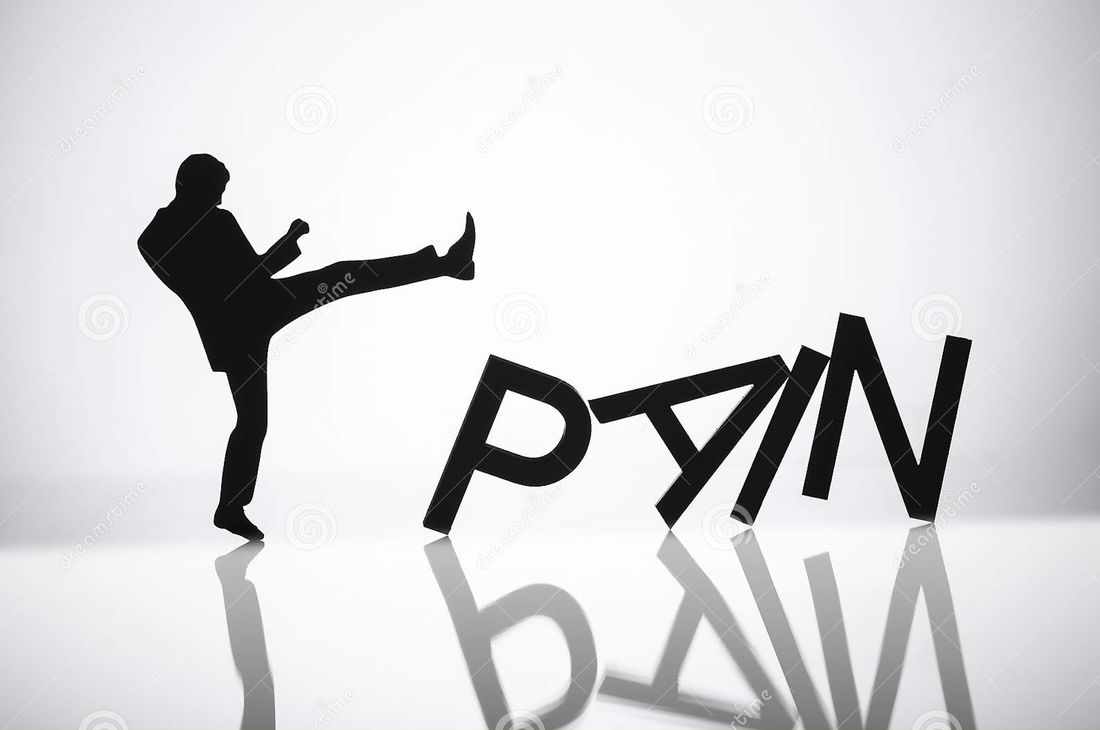
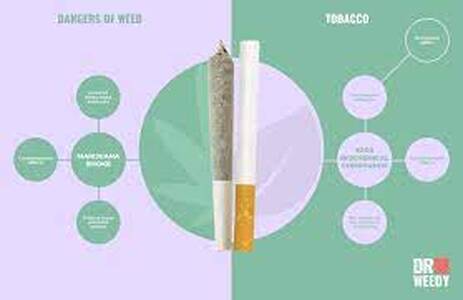


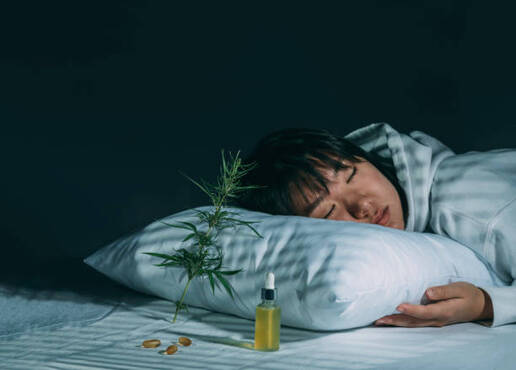



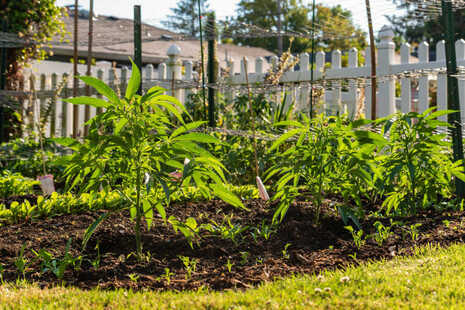
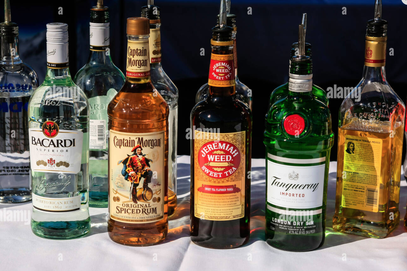

 RSS Feed
RSS Feed
